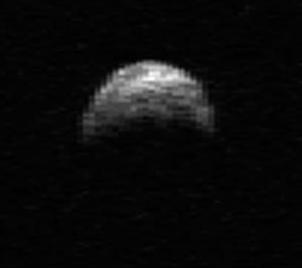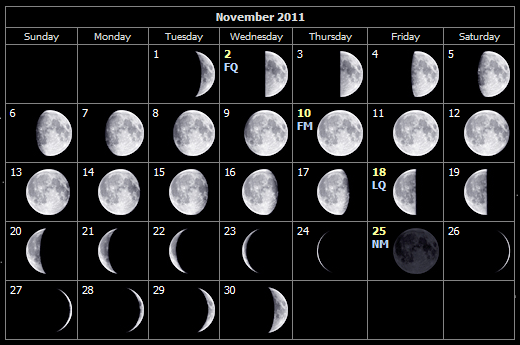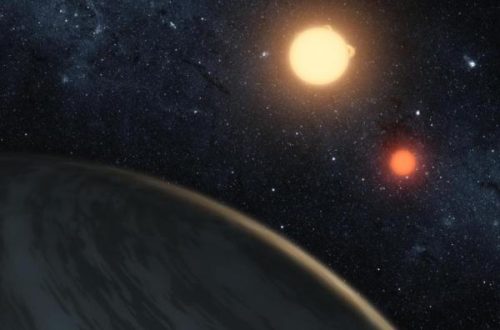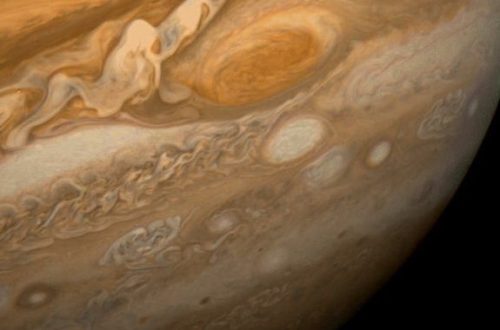Monthly Stargazing Calendar for November 2011
Looking for the November 2023 stargazing calendar?
This month we are expecting the flyby of Asteroid 2005 YU55. On November 8th, it will make a close approach to the Earth at 0.85 lunar distances. It has a diameter of about 400 meters so unfortunately it is too small to be visible to the naked eye. In fact it will reach about apparent magnitude 11 and will require a telescope with an aperture of 6 inches (15 centimeters) or larger in order to be seen due to the interference of the gibbous moon.
 Arecibo radar image of asteroid 2005 YU55
Arecibo radar image of asteroid 2005 YU55
While it will not pose a threat to the Earth, this rare event presents a unique opportunity for amateur astronomers to observe the asteroid as it makes it closest approach to our planet. Asteroids this large only pass close to the Earth about every 30 years.
Would you like to be notified of stargazing events?
 Animation of the trajectory of asteroid 2005 YU55 compared to the orbits of the Earth and the Moon on 8-9 November 2011.
Animation of the trajectory of asteroid 2005 YU55 compared to the orbits of the Earth and the Moon on 8-9 November 2011.
On the night of November 17 and 18 the Leonids meteor shower will peak. The Leonids are one of the best meteor showers to observe, producing an average of 40 meteors per hour at their peak. You may also see some meteors from November 13 to 20. Some of the faintest meteors will be hard to spot due to the nearly last quarter moon, but it should still be an excellent show. The meteors will seem to radiate from the constellation of Leo.

On November 25 a partial solar eclipse will be visible over Antarctica and parts of South Africa and Tasmania.
Moon phases
As you know, the Moon has a big impact on the visibility of celestial bodies in the night sky. So here are the Moon’s phases for this month:

Positions of the planets this month
Mercury: The closest planet to the Sun can be seen at dawn and dusk within the constellation of Scorpius not far from Venus and the bright star Antares. This planet, being the closest to the Sun, will appear to move quickly in the night sky and its position will change in the following weeks.
Venus: The sister planet can also be seen within the constellation of Scorpius. Just like Mercury which is nearby, the planet can only be seen at dawn and dusk.
Mars: The red planet can be seen in the constellation of Leo.
Jupiter: The gas giant is visible between the constellations of Pisces, Cetus and Aries. Jupiter can easily be spotted with the naked eye, even in highly illuminated cities.
Saturn: The ringed giant can be seen with the naked eye in the middle of the Virgo constellation, not far from the bright stars Spica and Vindemiatrix.
Uranus: The gas giant can be seen between the constellations of Pisces and Cetus with the use of a telescope.
Neptune: The blue giant requires a telescope pointed in the constellation of Aquarius in order to be seen.
Astronomical events next month
- December 10 – Total Lunar Eclipse.
- December 13, 14 – Geminids meteor shower peak.
- December 22 – December Solstice.
See also:
- Previous month’s calendar: Stargazing Calendar for October 2011
- Next month’s calendar: Stargazing Calendar for December 2011
Would you like to receive similar articles by email?






One Comment
Rodrigo Valenzuela
It is very interesting how you have explained the happening of events on different planets. The images are self explanatory. Thanks for sharing them